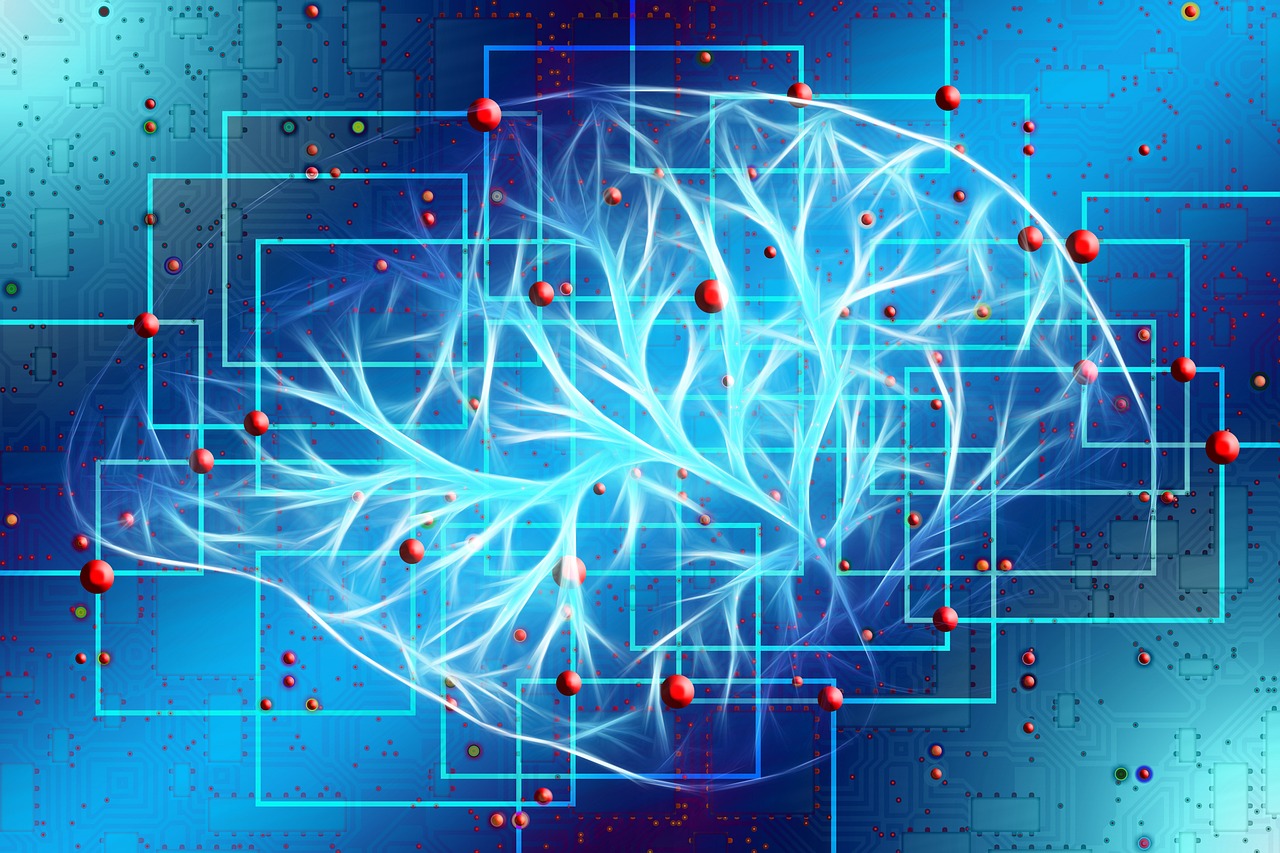Imagine a world where computers don’t just crunch numbers, but understand language, predict trends, and even create art. That world is rapidly becoming a reality thanks to the power of AI models. From powering your favorite search engine to revolutionizing industries, AI models are changing the way we interact with technology and the world around us. But what exactly are these AI models, and how do they work? This comprehensive guide will break down the complexities of AI models, exploring their types, applications, and impact on the future.
What are AI Models?
Defining Artificial Intelligence Models
At their core, AI models are computer programs that have been trained to recognize patterns, make predictions, and perform tasks that typically require human intelligence. They learn from vast amounts of data, identifying relationships and using that knowledge to make decisions. Think of it like teaching a child: you provide examples and feedback, and the child learns to generalize and apply that knowledge to new situations. AI models follow a similar process, but on a much larger scale.
The Learning Process: Training and Inference
The development of an AI model consists of two key phases: training and inference.
- Training: This is where the model learns from data. The model is fed a large dataset and adjusted repeatedly until it can accurately predict outcomes or perform tasks. The dataset is typically labeled, meaning that the correct answers are provided to the model during the training process. This allows the model to learn the relationships between the input data and the desired output.
For example, an image recognition model might be trained on a dataset of millions of images, each labeled with the object it contains (e.g., cat, dog, car). Through repeated exposure to these images, the model learns to identify the visual features that distinguish each object.
- Inference: Once the model is trained, it can be used to make predictions or perform tasks on new, unseen data. This is called inference. The model takes the input data, applies its learned knowledge, and generates an output.
Continuing the image recognition example, during inference, the model would be given a new image and asked to identify the objects it contains. Based on its training, the model would predict the objects present in the image, along with a confidence score indicating how certain it is about its prediction.
Different Types of AI Models
AI models come in various forms, each designed for specific tasks:
- Supervised Learning Models: These models learn from labeled data, where the correct answers are provided. Examples include:
Classification models: Used to categorize data into different classes (e.g., spam detection, image classification).
Regression models: Used to predict continuous values (e.g., predicting house prices, forecasting sales).
- Unsupervised Learning Models: These models learn from unlabeled data, discovering hidden patterns and relationships without explicit guidance. Examples include:
Clustering models: Used to group similar data points together (e.g., customer segmentation, anomaly detection).
Dimensionality reduction models: Used to reduce the number of variables in a dataset while preserving its essential information (e.g., feature extraction, data visualization).
- Reinforcement Learning Models: These models learn through trial and error, receiving rewards or penalties for their actions. They are often used in robotics and game playing (e.g., training a robot to navigate a maze, teaching an AI to play chess).
- Generative Models: These models learn the underlying distribution of a dataset and can generate new data that resembles the original data. Examples include:
Generative Adversarial Networks (GANs): Used to generate realistic images, videos, and audio (e.g., creating deepfakes, generating synthetic training data).
Variational Autoencoders (VAEs): Used for data compression, anomaly detection, and generative modeling (e.g., generating new faces, creating musical compositions).
The Power of Neural Networks
Understanding Neural Networks
Many powerful AI models, particularly in areas like image recognition and natural language processing, are based on neural networks. These are models inspired by the structure of the human brain, consisting of interconnected nodes (neurons) arranged in layers.
Deep Learning: Going Deeper
When neural networks have multiple layers, they are referred to as deep neural networks, and the training process is called deep learning. Deep learning has enabled significant advancements in AI, allowing models to learn complex patterns and achieve state-of-the-art performance on many tasks.
Common Neural Network Architectures
- Convolutional Neural Networks (CNNs): Excellent for image and video processing. They use convolutional layers to automatically learn features from images, such as edges and textures.
- Recurrent Neural Networks (RNNs): Designed for processing sequential data, such as text and time series. They have a “memory” that allows them to remember previous inputs and use that information to make predictions.
- Transformers: A more recent architecture that has revolutionized natural language processing. They use attention mechanisms to weigh the importance of different parts of the input sequence, allowing them to capture long-range dependencies more effectively. Transformer-based models like BERT and GPT have achieved impressive results on a wide range of NLP tasks.
Real-World Applications of AI Models
AI in Healthcare
AI models are transforming healthcare in numerous ways:
- Diagnosis and Treatment: AI can analyze medical images (e.g., X-rays, MRIs) to detect diseases like cancer with high accuracy. AI models can also help doctors personalize treatment plans based on a patient’s individual characteristics.
- Drug Discovery: AI can accelerate the drug discovery process by identifying promising drug candidates and predicting their effectiveness.
- Personalized Medicine: AI can analyze patient data to identify individuals who are at high risk for certain diseases and recommend preventive measures.
AI in Finance
The financial industry is also heavily leveraging AI:
- Fraud Detection: AI models can detect fraudulent transactions in real-time by identifying unusual patterns.
- Risk Management: AI can assess credit risk and predict loan defaults.
- Algorithmic Trading: AI can be used to automate trading strategies and execute trades at optimal prices.
AI in Customer Service
AI-powered chatbots are becoming increasingly common in customer service:
- 24/7 Availability: Chatbots can provide instant support to customers at any time of day.
- Personalized Recommendations: Chatbots can analyze customer data to provide personalized recommendations and offers.
- Efficient Handling of Inquiries: Chatbots can handle a large volume of customer inquiries simultaneously, freeing up human agents to focus on more complex issues.
AI in Manufacturing
AI is optimizing manufacturing processes and improving efficiency:
- Predictive Maintenance: AI can predict when equipment is likely to fail, allowing manufacturers to schedule maintenance proactively and avoid costly downtime.
- Quality Control: AI can inspect products for defects with greater accuracy and speed than human inspectors.
- Robotics and Automation: AI-powered robots can automate repetitive tasks, improving efficiency and reducing labor costs.
Ethical Considerations and Challenges
Bias in AI Models
AI models can inherit biases from the data they are trained on. This can lead to unfair or discriminatory outcomes.
- Example: If an AI model is trained on a dataset that primarily includes images of men, it may perform poorly at recognizing images of women.
- Mitigation Strategies:
- Carefully curating training datasets to ensure they are representative of the population.
- Using techniques to detect and mitigate bias in AI models.
- Developing AI models that are fair and equitable.
Explainability and Transparency
It can be difficult to understand how some AI models arrive at their decisions, especially deep learning models. This lack of explainability can make it challenging to trust and deploy AI models in critical applications.
- Mitigation Strategies:
- Developing more interpretable AI models.
- Using techniques to explain the decisions made by AI models.
- Providing transparency about the limitations of AI models.
Data Privacy and Security
AI models require large amounts of data to train. This raises concerns about data privacy and security.
- Mitigation Strategies:*
- Using anonymization techniques to protect sensitive data.
- Implementing strong security measures to prevent data breaches.
- Developing AI models that can learn from data without compromising privacy.
Conclusion
AI models are rapidly transforming our world, offering unprecedented opportunities to solve complex problems and improve our lives. From healthcare to finance to manufacturing, AI is driving innovation and creating new possibilities. However, it is crucial to address the ethical considerations and challenges associated with AI, such as bias, explainability, and data privacy, to ensure that AI is used responsibly and for the benefit of all. As AI technology continues to evolve, it will be essential to foster collaboration between researchers, policymakers, and the public to shape the future of AI in a way that is ethical, sustainable, and beneficial to society. By understanding the potential and the limitations of AI models, we can harness their power to create a better future for all.




